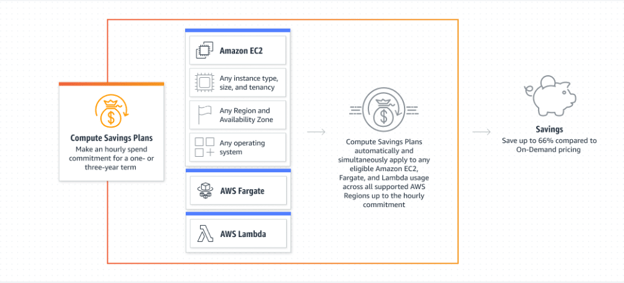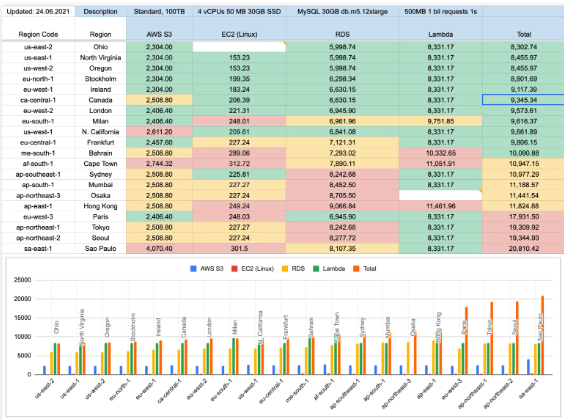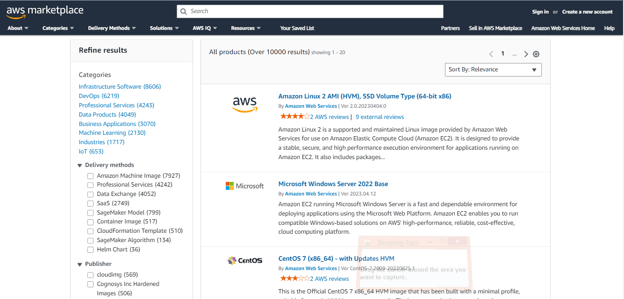AWS Cost Optimization Tips and Best Practices to Follow in 2023
Learn top AWS cost optimization tips for 2023. By following these strategies, you can proactively manage your AWS spending, increase efficiency, and make the most of your cloud investments while staying competitive in the market.

Are you looking to save big on your AWS cost?
Here, we'll share time-tested practices to ensure your cloud cost stays manageable. Plus, expert tips for increased agility, faster innovations, and, notably, making the most of your cloud investments.
Besides loving AWS flexibility and scalability, keeping a closed eye on cloud spend is equally crucial. After all, you don't want to see sky-high bills for your cloud usage on AWS.
Let's start with the insights that will help you curtail cloud spending while leveraging the best of AWS cost optimization.
7 Best Practices for Cloud Cost Optimization and Efficiency
If you have ever been surprised by higher-than-expected bills, here are the best practices to help you optimize cost.
Go for Cost-Effective AWS EC2 Instances
Before you begin, understand Instances in AWS are virtual environments and are different from the underlying base operating system.
So, rather than being dependent on dedicated instances, weigh these cost-effective options as well.
-
On-Demand Instance:
On-demand instances offer flexibility and allow you to pay for computing capacity by the second with no long-term commitments and upfront costs. You have complete authority over its lifecycle.
Advantages - Flexible and easy to use, no long-term commitment and upfront.
Recommended to Use - For irregular workloads and short-term applications.
-
Spot instances:
Spot instances let you use unused EC2 capacity at steep discounts, eventually minimizing your Amazon EC2 costs exceptionally.
Advantages: Cost-effective choice for applications that can be interrupted.
Recommended to Use: For data analysis, background processing, batch jobs, and other optional tasks without affecting user experience or application processing.
-
Reserved instances:
Reserved instances can be purchased for 1 year or 3 years with a significant discount of ~75% compared to on-demand instances. Furthermore, this offers capacity reservation when used in a specific region.
Advantages - Affordable for applications with predictable workloads and capacity reservation
Recommended to use - Right for applications with constant and long-term usage patterns.
-
AWS saving plans:

AWS saving plans are not synonymous with reserved instances. Unlike reserved instances, AWS saving plans are based on the commitment to spend a specific dollar amount per hour for a particular time.
The best part is that AWS saving plans offer discounts on AWS Fargate and AWS Lambda usage. Plus, you can use AWS Cost Explorer recommendations to find discounts and make sure you use the applicable computing capacity.
Advantage: It's a flexible pricing model that saves up on computing services.
Recommended to use - Ideal for organizations and systems susceptible to usage changes.
Related Read: 8 AWS Security Best Practices for 2023 [Cloud Security Checklist Included]
Swap with a Cheaper Region on AWS
Do you know that costs can almost double between regions on AWS?
Yes, you read it right! Not all regions are created equal. There are substantial differences in the region in price, performance, number of availability zones, and product selection among AWS regions.
So, if you have the entitlement to switch to a cheaper region, you can make significant savings on your spending.

💡 Tip: Use AWS calculator to calculate the cost for a specific region.
Rightsize Workloads
It’s vital to analyze underutilized or idle EC2 instances with the help of the AWS Cost Explorer Resources Optimization report to rightsize the workloads.
To achieve this, you can minimize costs by scaling down the instances. Also, you can automatically stop instances using AWS Instance Scheduler and automatically resize EC2 instances through AWS Operations Conductor. AWS Compute Optimizer gives recommendations for scaling among the instance families, removing performance bottlenecks, and advice for EC2 instances that are an unskippable element of an Auto Scaling Group.
Switch to AWS Marketplace for Software Procurement
Use the AWS marketplace to find and buy software and services from third-party vendors that run on AWS. This approach will help you minimize costs by offering access to a wide range of software at affordable prices.
Put AWS Budgets and Alerts to Use
Did you know AWS Budgets can help you manage your AWS costs and usability in real-time?
With AWS budgets, you can define cost and usage reminders and track and predict your spending against your budget. In addition, it allows you to build custom budgets based on your business requirements and get notifications when your costs or defined usability limit exceeds the threshold.
Here, AWS Budgets help you minimize costs by providing visibility into your spending patterns and allowing you to find and address sky-rocketing costs or unexpected expenses on time.
Practice Managed Services
AWS offers an array of managed services that can help you minimize costs by offloading infrastructure management and reducing the time and effort needed to manage your workloads.
For example, rather than running your own PostgreSQL/MongoDB database instance on EC2 or EKS (Kubernetes) cluster, it would be easy and cost-effective to use AWS RDS/Document DB.
Schedule to turn off Unused Instances
For AWS cost optimization, remember to shut down your unused instances, especially at the end of the day, on holidays and weekends. And, considering non-production instances, plan a schedule of on/off times.
Moreover, evaluate usage metrics to conclude when an instance will be used more intensively. This way, you can implement an always-on downtime plan that can be stopped when access to the instance is required. Besides, it’s essential to understand that when your instance dissolves, you still pay for EBS storage volumes and all other things connected.
Finally
The key to using the above tips and approaches for AWS cost management is a proactive approach to your custom software development practices. These practices are a handful of the quintessential Cloud cost optimization techniques you should integrate into your tasks regularly.
And, as you can see, making significant savings on AWS doesn’t need to be overpowering. Signity can help you make the most of your cloud investment. Their experts can help you stay competitive, know how to rightsize workload, and choose the right approach at the right time to optimize cloud spend.
We hope this will prove helpful to you and businesses like you to make informed decisions.






![8 AWS Security Best Practices for 2024 [Cloud Security Checklist Included]](https://www.signitysolutions.com/hs-fs/hubfs/AWS%20cloud%20security.webp?width=352&name=AWS%20cloud%20security.webp)







